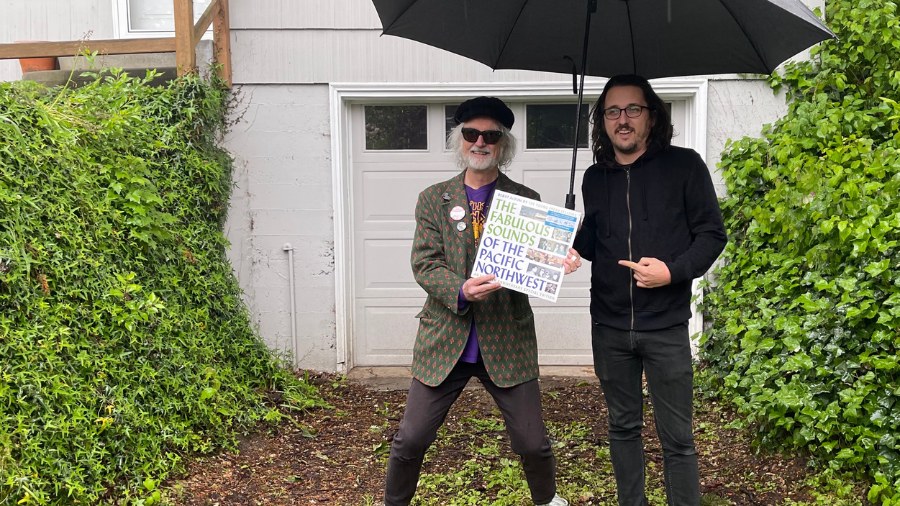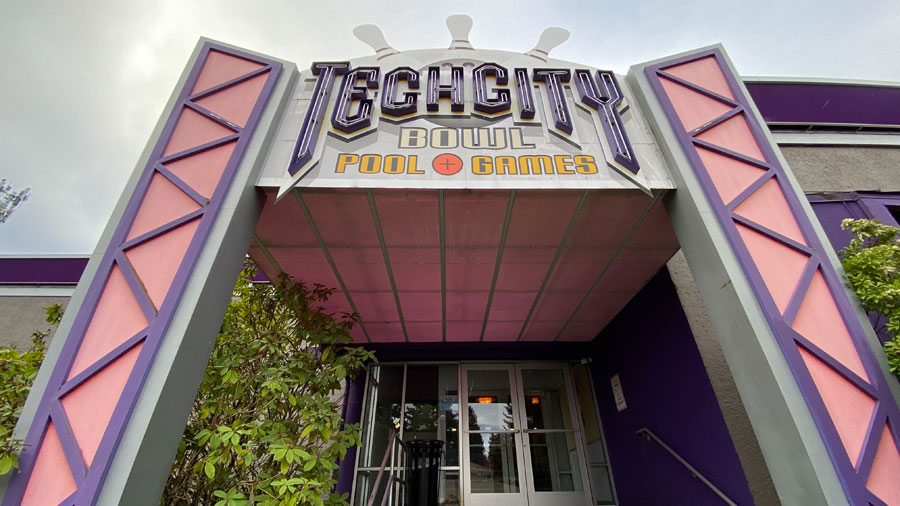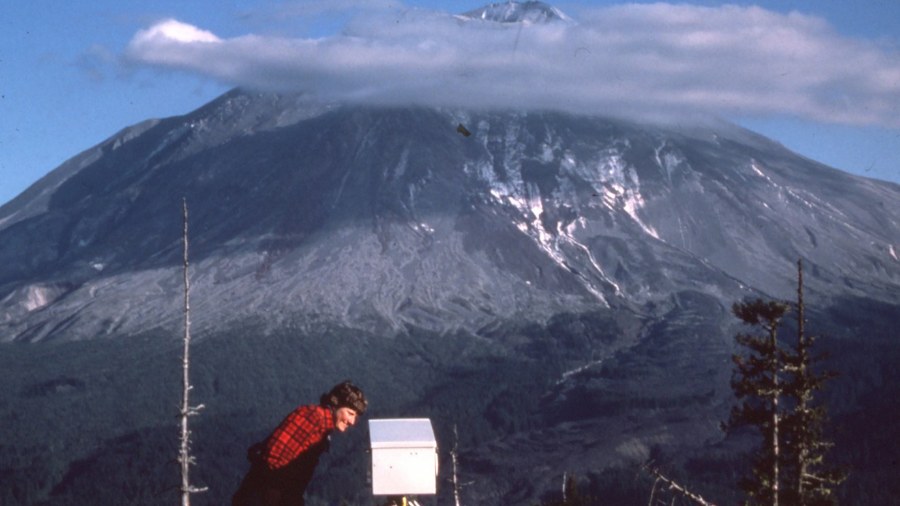Memorial Stadium’s wall of names designated a historic Seattle landmark
Oct 5, 2023, 7:29 AM | Updated: 1:08 pm

Names on the wall at Memorial Stadium in Seattle Center. (Feliks Banel)
(Feliks Banel)
Update 10/5:
Seattle High School Memorial Stadium at Seattle Center was considered for landmark status by the Seattle Landmarks Preservation Board Wednesday afternoon, where they decided to protect only the memorial wall.
“We’re looking at solely the memorial wall and its associated structures that support just the memorial wall and a 20 feet boundary of the site with not including structures on that site,” Ian McCleod, member of Seattle Landmarks Preservation Board, said.
The board then proceeded to unanimously vote to protect the memorial wall but not the rest of the stadium.
Original 10/4 :
As KIRO Newsradio previously reported, Memorial Stadium was discussed at an earlier meeting of the Landmarks Preservation Board in August, when board members voted 8-1 to consider the entire 1947 structure – and not just the 1951 wall of names of Seattle Public Schools’ World War II dead – for landmark designation.
The process is clumsy, to say the least. The Seattle School District owns Memorial Stadium and has made it clear they want to tear it down. They paid a consultant to prepare what many preservation advocates would describe as an “anti-nomination” – or a document whose goal is the stadium NOT being designated a landmark.
More on Memorial Stadium: Redevelopment takes another step forward
Whether this is true or not, the landmark nomination for Memorial Stadium, which was submitted in June, is missing a stunning amount of basic historical information about Memorial Stadium. At their meeting in August, board members asked the consultants who prepared the nomination to address these deficits, particularly in the areas of concerts held at Memorial Stadium, as well as other public gatherings.
When the board meets Wednesday to consider the “anti-nomination,” there will be no one person officially advocating on Memorial Stadium’s behalf and encouraging the Seattle Landmarks Preservation Board to designate the structure as a city landmark. As one preservation professional (who requested anonymity) said in August, the process is akin to a defense attorney advocating for their client’s execution.
Members of the Seattle Landmarks Preservation Board are volunteers, and they often look to the City of Seattle Department of Neighborhoods Landmarks Board staff for direction on how they might vote on these landmark designations. The staff provides this direction in the form of a staff report.
For Memorial Stadium, which is already targeted for removal and replacement as part of a public-private partnership, it’s perhaps political or other subtle pressure that led to a staff report that reads like a kind of policy contortionism.
“The Landmarks Board Coordinator acknowledges the cultural history associated with this site, as a gathering space for community events prior to development, then as Civic Field, then as Memorial Stadium,” the staff report reads. “The coordinator believes the significance of this place may not be embodied in the 1947 stadium structure itself, but rather in the open, outdoor playfield area.”
Suggesting that the significance of Memorial Stadium is not in the structure but only in the field is a kind of bizarre hair-splitting, which also conveniently gives the Seattle Landmarks Preservation Board a means of not standing in the way of the City of Seattle and Seattle Public Schools’ plan to replace the stadium.
However, extending this analysis to other potential landmarks the Seattle Landmarks Preservation Board may one day have to weigh in on, one might be able to say that only the screen of a movie theatre is historically significant, and only the stage of a music venue is historically significant, or only the kitchen of a restaurant is historically significant.
It’s as if those community members gathered to take part in the game, movie, concert or meal are immaterial to the historical significance. That’s just plain bizarre and doesn’t make any logical sense.
Reporting live from Seattle’s past: Beloved, and huge, Jantzen Beach Carousel gets a new home
The other thought is that in some future landmark designation process, the owner of a theater, a restaurant or a music venue who is opposed to landmark designation could just tell the Seattle Landmarks Preservation Board “the significance of this place may not be embodied in the structure itself, but rather in the spaces inside. So it’s not a landmark. And so I’ll tear down the old non-landmark building and maintain those significant ‘spaces inside’ when I build a new thing in the exact same spot.”
This might set a dangerous precedent for any structure that comes before the Seattle Landmarks Preservation Board for possible landmark designation.
The staff report also suggests the option of designating the 1951 wall of names as a landmark. That would miss the point of the 1947 structure, which was built as the memorial to Seattle Public Schools’ alums who died in World War II. The conflict had just ended, and many relatives of those dead former students likely gathered in those 1947 grandstands to remember their loved ones. Those grandstands and other elements of Memorial Stadium are what’s often called a “living memorial.”
The concept of “living memorials” was popular after World War II when civic leaders decided that rather than build statues of soldiers to occasionally gaze upon and genuflect, it was better to build things like stadiums where people could freely and voluntarily gather and celebrate and cheer, freely express themselves however they saw fit, and even sometimes mourn.
Many people in the Seattle area can still remember that Memorial Stadium played host to a public gathering of 10,000 people in April 1968 after Martin Luther King, Jr. was assassinated. That memorable gathering of those people in those 1947 grandstands was not mentioned in the school district’s landmark nomination for Memorial Stadium, by the way.
It could be argued this freedom to gather together as community members in those 1947 grandstands for sports, for music, and even for memorial services is exactly what those nearly 800 Seattle Public Schools alums were fighting for when they made the ultimate sacrifice in World War II. And, the case could be made for giving Memorial Stadium the “Climate Pledge Arena treatment,” to preserve the original structure, and create a newly imagined state-of-the-art gathering place in and around that should-be-considered-sacred 1947 stadium.
And if Seattle High School Memorial Stadium doesn’t qualify as a landmark – the fully functioning, structurally sound living, breathing and tangible symbol of this city’s promise to always remember and honor that sacrifice – no structure does.
You can hear Feliks every Wednesday and Friday morning on Seattle’s Morning News with Dave Ross and Colleen O’Brien, read more from him here, and subscribe to The Resident Historian Podcast here. If you have a story idea, please email Feliks here.













